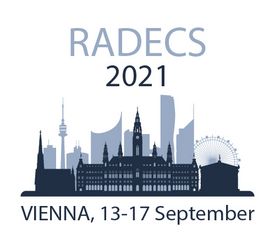Abstract
Small satellite missions and constellations of small satellites have become indispensable tools for space research, space technology and space applications. Since the first ones were started in the early 2000 years as purely educational projects, they have matured and also the reliability has improved significantly.
For professional missions key questions are which performance and lifetime can be expected from a small, inexpensive spacecraft which utilises automotive-grade COTS components instead of space-qualified electronics.
TU Graz developed and launched the first Austrian satellite TUGSAT-1/BRITE-Austria in February 2013. This spacecraft dedicated to measure brightness variations of massive luminous stars has been originally designed for a two year’s mission, but after 8.5 years in orbit it continues to deliver high quality science data.
OPS-SAT is the second spacecraft developed under the leadership of TU Graz. OPS-SAT is the first ESA-owned nanosatellite and constitutes a flexible hardware and software laboratory in Space. It was launched in December 2019 and is successfully operated by the European Space Operations Centre ESOC in Darmstadt with support by TU Graz. A follow-up mission, called PRETTY (Passive Reflectometry and Dosimetry) in collaboration with RUAG Space Austria and Seibersdorf Laboratories is currently under preparation.
In this paper results of the long-term behaviour of the spacecraft with respect to power, attitude control, thermal, communications and CCD chip performance are presented based on telemetry data collected since launch in February 2013. Within the framework of radiation tests of critical subsystems of a nanosatellite have been performed, especially on a highly integrated processor based on a commercial system-on-chip module.
Short CV
Prof. Otto F. KOUDELKA studied Electrical Engineering at Graz University of Technology (TU Graz). He received Master and PhD degrees with honours in communications in 1980 and 1986, respectively. He worked at the Rutherford-Appleton Lab and University of Buckingham in the UK in 1990 and was Visiting Professor at the University of Kansas (USA) from 1999-2000. In 2002 he became Full Professor in Communications at TU Graz.
He is head of the Institute of Communication Networks and Satellite Communications at TU Graz since 2000. He also served as Director of the Institute Applied Systems Technology, respectively, Head of the Space and Acoustics Research Group at Joanneum Research until 2012. From 2005-2011 he was Vice Dean of the Faculty of Electrical Engineering and Information Technologies.
His research and teaching activities are in the fields of small satellites, terrestrial and satellite broadband wireless communication systems and networks, applications of wireless systems (such as mobile broadband, tele-medicine, tele-education, emergency communications and disaster management), ground station technology as well as space systems, mostly under contracts by European Space Agency ESA and the European Union. He has been active in a large number of satellite communication field trials in cooperation with European Space Agency, European Union, United Nations and several teelcom operators (EUTELSAT, Telenor, Deutsche Telekom, Telecom Austria). In the last 17 years he focused on nanosatellite developments.
He is Principal Investigator and project leader of the BRITE-Austria/TUGSAT-1 nanosatellite mission (the first Austrian satellite, launched in 2013 as part of BRITE Constellation measuring the brightness variations of massive luminous stars) and member of the BRITE Executive Science Team. He is project leader for ESA’ OPS-SAT nanosatellite mission, launched in 2019, demonstrating new operational concepts and conducting a variety of hardware and software experiments. He is the responsible team leader at TU Graz for the CubeSat mission PRETTY (Passive Reflectometry and Dosimetry) in cooperation with RUAG Space Austria and Seibersdorf Laboratories, also carried out as an ESA project under the GSTP program.
He was Austrian Delegate to the COST ICT Domain Committee until 2014. He is member of IEEE and ÖVE (Austrian Association of Engineers) and is currently member of the Science Commission of the Austrian Armed Forces. He served in several working and advisory groups of European Space Agency (e.g. chairman for the ESA CODE experiment, member of the advisory committee to the ESA Director of Telecommunications in 1995).
He is Full Member of the International Academy of Astronautics and member of the Space Communications and Navigation Committee of the International Astronautical Federation (IAF). He is Member of the International Program Committee of the IAF and Chair of the Program and Local Organising Committees for the UN/Austria Symposium series on Space Technology and Applications for Sustainable Development. In 2019 he became chairman of the IAF Space University Administrative Committee, fostering cooperation of universities in the area of small satellites.
From October 2016 - 2018 he was Vice President of the International Astronautical Federation.
He is author or co-author of more than 170 publications.















